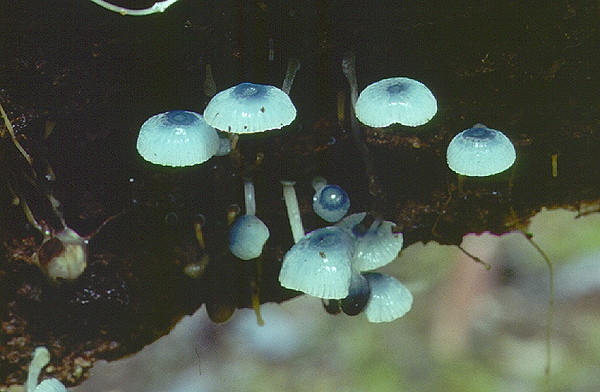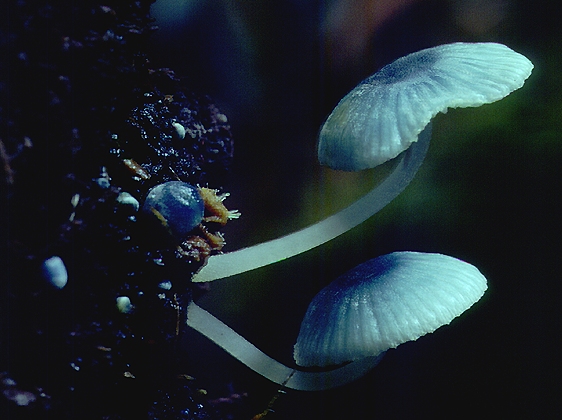
Mycena interrupta (Berk.) Sacc.

Common name: Pixies Parasol.
Description: The caps are 614 (20) mm in diameter, viscid to glutinous and brilliant cyan-blue with radial striations. They are at first globose (when the cap is pressed to the wood substrate) but then become broadly convex usually with the centre slightly depressed. The gills are pure white with blue margins and they just reach the stem. The stems are 1020 mm long and 0.51 mm thick, white, smooth, dry, hollow and cylindrical; the lower end of the stem is attached to the wood substrate by a small, flat, white disk (1.52 mm in diameter) with blue margins.
The spores measure 710 × 46 µm, are ellipsoidal, smooth and smooth, colourless but white in mass.
Substratum: This species appears in small troops on rotting logs in rainforest, eucalypt forest and Nothofagus (beech) forest.
Distribution: Known from New South Wales, Victoria, Tasmania, South Australia and Western Australia. Queensland records are uncertain.
Notes: The spectacular blue and viscid caps of this tiny wood-inhabiting species make it very easy to recognise, and it is one of the most beautiful of the Australian fungi. It was first described from Tasmania by the English mycologist M.J.Berkeley and supposedly has interrupted gills but this character has never been satisfactorily defined. All specimens seen have gills which are almost free or just reach the stem. Two other species, Mycena cyanocephala Singer described from Chile in South America and Mycena veneta G.Stev. from New Zealand have since been shown to be identical to Mycena interrupta. This distribution suggests that this species has its origins in the flora of Gondwana.

